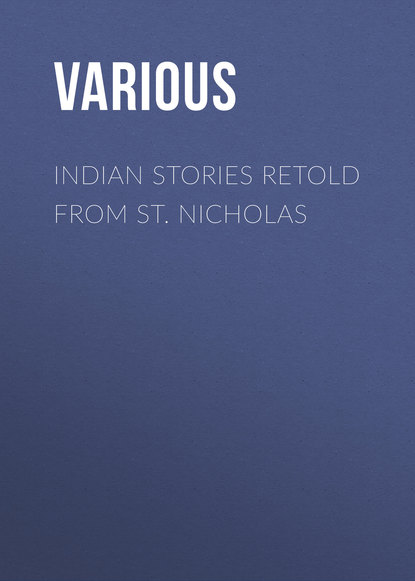 Полная версия
Полная версияIndian Stories Retold From St. Nicholas
At that time this province was so difficult to reach, that the horses of the Spanish general's troops were completely demoralized, and he was therefore obliged to omit a visit to Oraibi, the largest and furthest removed of the villages. He had, however, met with little resistance from the inhabitants, and, doubtless, did not deem the Mokis a warlike race. After the departure of Vargas, the Mokis continued their old ways and were seldom visited, so that even now, three and a half centuries after the first visit of the Spaniards, they remain nearly in their original condition.
Next to the Moki towns, the Pueblo of Zuñi maintained its primitive customs to the greatest extent, and from similar causes.
The illustration is from a photograph made in Zuñi by Mr. Hillers, photographer of the Bureau of Ethnology, and shows one of the natives, dressed in the costume of to-day, beside an eagle-cage. The costume is composed of simple materials, the trousers being of unbleached cotton, the shirt of calico, and the turban generally of some soft red cloth. The Mokis wear their hair cut straight across the eyebrows in a sort of "bang," then straight back even with the bottom of the ear, the rest being made up into a knob behind. All are particular about their ornaments, caring little for any common sorts of beads, but treasuring coral, turquoise, and silver.
The eagle is sacred among Pueblos who have not abandoned their native religion, and the feathers are used in religious ceremonies. For this reason the eagle is protected and every feather preserved. His nesting-places are carefully watched, and often visited, so that a supply of feathers, from little downy ones no larger than a twenty-five cent piece to the stiff and long ones from the wing and tail, are preserved in every family, – the first, or downy ones, to breathe their prayers upon; the larger ones for other sacred uses. Sometimes several "prayers" are fastened to one little twig that all may proceed together to their destination. There is something very poetic in this breathing of a prayer upon a feather from the breast of an eagle – in flight the king of birds, familiar with regions which man can know only through sight.
The Navajos have no reverence for the bird. They make raids upon the nesting-places where for centuries the Mokis have obtained feathers, and these raids are a common source of trouble between the two tribes.
None of the present buildings of the Pueblos are equal in masonry to the ruins common throughout the region. These were ruins even when the Spaniards arrived, and, consequently, it is supposed that a superior people once occupied the country, who may, however, have been either ancestors or kindred to the Pueblos. In time the question may be solved through the numerous legends illustrated in pottery decoration, for all the decorations have a meaning, and the legends are handed down by word of mouth from father to son. Once when the legends were being discussed, Pow-it-iwa, an old Moki, poetically remarked to a friend of mine, "Many have passed by the house of my fathers, and none has stopped to ask where they have gone; but we of our family live to-day to teach our children concerning the past."



